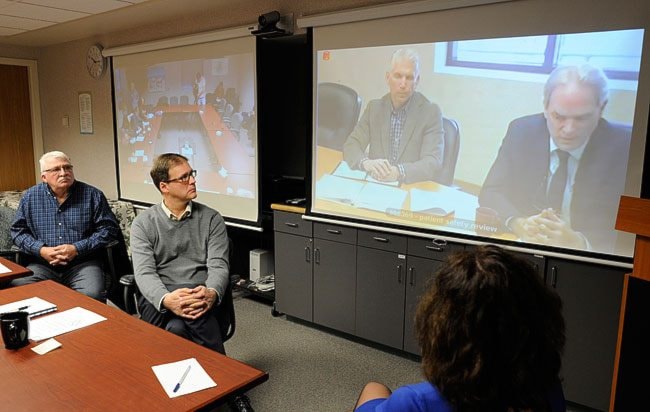A patient safety review has found that it was an irregular heartbeat that caused the death of Teresa Ann Scheunert in Watson Lake Hospital.
An earlier coroner’s report, based on evidence from a forensic toxicologist and a forensic pathologist, had found that Scheunert had died from a toxic mix of chemicals administered to her while in hospital.
Scheunert, a Watson Lake nurse, was admitted to the hospital on June 7, 2012, for back pain related to a workplace injury. She died June 21, 2012.
Toxicological testing found that fentanyl in her blood was “within a range reported in lethal cases.”
But Dr. Robert Robson, a Manitoba doctor with 12 years of experience conducting patient safety reviews, said that drug overdose is inconsistent with the manner of Scheunert’s death, based on interviews with those who gave her care.
A nurse reported an hour before she died that Scheunert was sleeping peacefully and breathing normally, said Robson. That doesn’t align with someone who is overdosing on drugs, he said.
The death was sudden and unexpected, based on all the evidence, said Robson.
Cardiac arrhythmia therefore is a more reasonable explanation for the death, he said. That condition has to do with a irregular heartbeat, and it can cause sudden death.
Unfortunately, because it has to do with chemical impulses to the heart, there is no way to prove after the fact that a cardiac arrhythmia happened.
Robson suggested that the arrhythmia was likely associated with sleep apnea.
There was nothing in Scheunert’s clinical presentation that would have alerted her caregivers to a problem with sleep apnea, although she did at times snore loudly, said Robson.
Although her care may not have been perfect, decisions made by doctors and nurses did not contribute directly to Scheunert’s death, he said.
“I could find no direct contributing factors that were linked to Teresa Scheunert’s death based on decisions or actions taken by the physicians or the staff at Watson Lake Hospital.”
Increases in doses of pain medication were done for “very understandable reasons,” he said.
The patient safety review differs in its findings from the coroner’s report in fewer ways than is obvious at first glance.
Robson said that pain medication was likely a contributing factor to Scheunert’s death, just not the immediate cause.
And the coroner’s report notes that Scheunert had an enlarged heart, which can predispose one to cardiac arrhythmias. The drugs could contribute to cardiac arrhythmia.
The major difference between the findings is that the coroner found the death was accidental but that the system let Scheunert down, while Robson found that actions of both the medical staff and the hospital corporation were appropriate.
The coroner included a number of recommendations about safeguards for administering high-alert medications, while Robson’s recommendations focused on developing a stronger legislative framework to trigger patient safety reviews more often.
Kirsten Macdonald, chief coroner, said it will ultimately be up to a forthcoming coroner’s inquest to determine how Scheunert died, and what contributed to her death.
An inquest has been called for March in Scheunert’s death, and into the death of Mary Johnny, who also died after receiving care from the Watson Lake Hospital.
The coroner’s inquest will start from scratch, said Macdonald.
“My opinion and my findings are no longer relevant. It’ll be for the jury to decide.”
A jury of six will hear all of the evidence and come to its own conclusions about the cause of death and recommendations, she said.
Macdonald will preside over the inquest, and the family will get a chance to call witnesses and ask questions.
But the latest confusion caused by the patient safety review has strengthened Scheunert’s family’s call for a public inquiry, not a coroner’s inquest, said Crystal Thomas, Scheunert’s daughter.
“We have very little trust that the public interest is being served right now.”
A coroner’s inquest is limited to examining the facts of the death and presenting recommendations about how to prevent similar deaths in the future.
A public inquiry can have a much broader mandate to examine issues of public interest.
The family has questions not only about Scheunert’s death, but about how things were handled in the wake of it, said Thomas.
For example, they want to know why it took four days to get an autopsy, which happened only after the family demanded it.
The family would also like to ask questions of the coroner, but they will not be able to, since Macdonald intends to preside over the inquest.
A coroner’s report was released on June 14, 2013, only to be retracted with a few hours. A new report was released on July 9 with significant changes.
The coroner has explained that new evidence came to light that required the changes.
The Opposition NDP has also continued to call for a public inquiry.
“The more we get into this, the more questions there are,” said MLA Jan Stick.
She was “gobsmacked,” “shocked” and “appalled” at the findings of the patient safety review, she said.
The review appeared to be more concerned with the cause of death than with actual issues of patient safety, said Stick.
The family can’t find a lawyer to represent them at the inquest, and couldn’t afford one anyway, said Thomas.
“Everything is on our own dime, including our time,” said Wanda Zimmerman, Scheunert’s sister.
“I just give kudos to the family for sticking to this,” said Stick. “They must be so tired and drained by this, and yet they keep moving forward.”
Contact Jacqueline Ronson at
jronson@yukon-news.com
